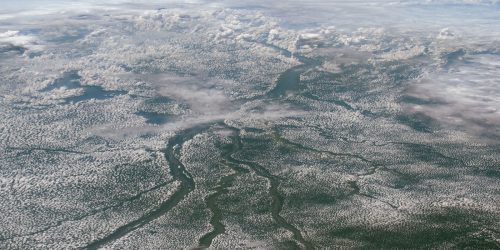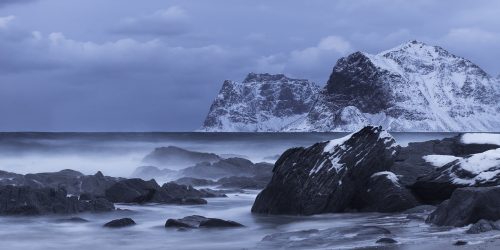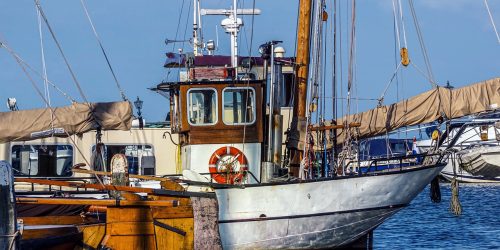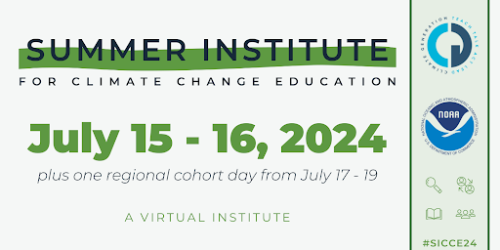CPO’s Climate Observations and Monitoring (COM) program and Climate Variability and Predictability (CVP) program, in partnership with NOAA’s Global Ocean Monitoring and Observing (GOMO) program, are announcing 12 new three-year projects in Fiscal Year 2021 that aim to increase the use and value of ocean observations, advance our understanding of climate variability and change, and enhance NOAA’s ability to model and predict the Earth System. The competitively selected 12 projects total $5.16 Million1, including $3.5M in grants and $1.66M in other awards.
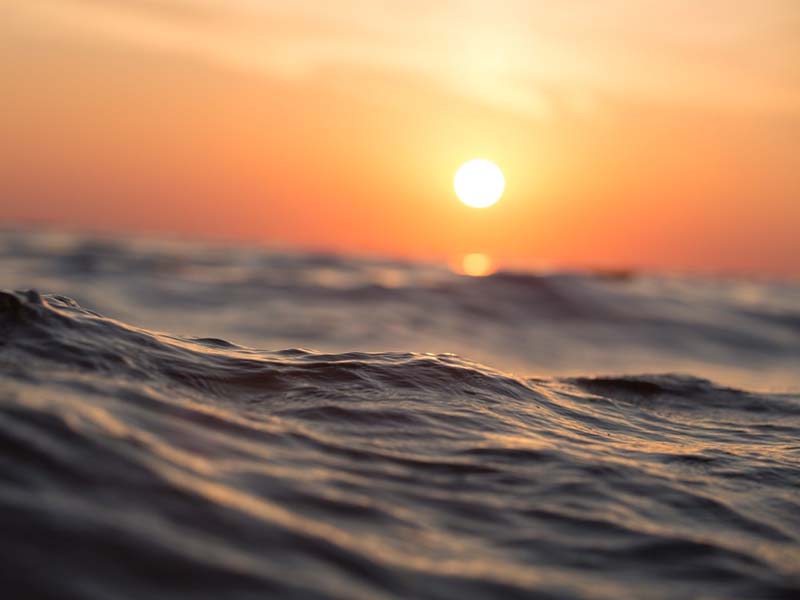
Observations are a foundational element of the climate research and services enterprise. In the last few years, reports by the National Academies of Science2, the ocean observing community3 and CPO’s Earth System Science and Modeling Division’s community4 have called on observationalists, modelers, and data assimilation practitioners to improve the use of existing observations, and to jointly consider physical, chemical, and biological processes operating at different scales. Reports also highlighted that many autonomous and emerging ocean observations are underutilized, including potential future biogeochemical ocean observations prioritized in NOAA’s Science Advisory Board’s Subseasonal to Seasonal to Decadal report5, and others6.
With the advent of new methods, approaches, and technologies, coupled with the unprecedented rate of global change, the Climate Program Office has the opportunity to support research and facilitate partnerships across the external and NOAA communities that will increase the use of NOAA’s observations in advancing detection of changes in the atmosphere and ocean, and understanding of the earth system7. This work will ultimately help further monitoring, detection, and prediction of the earth system for societal applications central to NOAA’s mission.
To help bridge these gaps, COM, CVP, and GOMO issued a call soliciting research projects that will increase the usefulness of NOAA observations to the NOAA observing, modeling and/or satellite communities, and/or the broader scientific community.
The selected projects feature research that include data integration from past field campaigns, innovative methods (such as machine learning) that leverage emerging observations, and new ways to make observations more accessible. New approaches to climate monitoring, developing and improving databases, and bridging the gap between research and applications are also on the forefront of this year’s researchers.
The 12 new projects8 funded by CPO and GOMO in FY21 are:
- Biogeochemical Argo Calibration Algorithms
Biogeochemical Argo (BGC) floats have a great potential to revolutionize the collection of data to monitor the ocean carbon cycle, and ongoing climate changes in the ocean such as global ocean warming and acidification. The expanding array of BGCs allows for the opportunity to improve the quality and quantity of information it collects. This project will develop a new and expanded data product that will help in realizing the full potential of the BGC float observing strategy.- PI: Brendan Carter, University of Washington
- Co-PI(s): Richard Feely, Andrea Fassbender, Pacific Marine Environmental Laboratory (PMEL)
- Developing an In-Situ Satellite Blended Marine Air Temperature Dataset Using Artificial Intelligence
Marine air temperature (MAT) drives climate processes and influences high-impact events such as extreme cyclones, sea level rise, and coastal flooding. This project will result in a new observation-based (in situ and satellite) MAT dataset that will enable global and regional climate climate monitoring and model comparisons. The new high-resolution global MAT dataset will be developed using a state-of-art machine learning framework.- PI: Jessica Matthews, North Carolina State University
- Co-PI(s): Yuhan (Douglas) Rao, North Carolina State University / North Carolina Institute for Climate Studies (NCICS); Lei Shi, National Centers for Environmental Information (NCEI)
- MarineFlux: A User friendly In-Situ Marine Turbulent Flux Data Service
Air-sea fluxes are a key component of the Earth’s energy and water cycles, impacting ocean and atmospheric weather on different scales. Flux observations are available, however, these are difficult for weather and climate modelers to use because of data set inconsistencies. This project will overcome those difficulties and establish a user-friendly web access point for the dissemination of turbulent air-sea fluxes and the essential ocean and climate variables required to estimate the fluxes from in-situ platforms.- PI: Shawn Smith, Florida State University
- Co-PI: Mark A. Bourassa, Florida State University
- Innovative Analysis of Deep and Abyssal Temperatures from Bottom Moored Instruments
The ocean plays a major role in the global redistribution of heat within the climate system. However, direct observations of temperature variability in the deep ocean—a key indicator of the ocean’s response to climate change—are very sparse in the present Global Ocean Observing System. This innovative project is opportunistically rescuing and curating temperature data from deep Atlantic ocean observations (PIES moorings). The resulting novel temperature dataset will be used to quantify uncertainties in the existing long-term observations, as well as model simulations.- PI: Renellys Perez, NOAA / Atlantic Oceanographic and Meteorological Laboratory (AOML)
- Co-PI: Shenfu Dong, NOAA AOML / Physical Oceanography Division (PHOD)
- Uncertainty Quantification, Data Quality, and Observing Network Design in an Ocean State of the Tropical Pacific
The Tropical Pacific Observing System (TPOS) is an international effort to advance the understanding and prediction of tropical Pacific variability, its influence on El Niño Southern Oscillation (ENSO), and ENSO’s profound consequences for agriculture, marine ecosystems, human health, and disaster preparedness globally. This project will use an innovative design framework to test and assess observational strategies for TPOS in the context of data assimilation in support of reanalysis and model initialization.- PI: Patrick Heimbach, University of Texas at Austin
- Co-PI(s): Matthew Mazloff, University of California San Diego – Scripps Institution of Oceanography; Aneesh Subramanian, University of Colorado at Boulder
- Evaluating Earth System Models Using Apparent Relationships Rather than Spatial-Fields-Using Neural Networks as Model Comparators
Earth System Models (ESM) often fail to reproduce important biological features, like the base of the foodweb (e.g. phytoplankton), because factors that control their growth are complex (e.g. light, mixing, nutrients). Building on proof-of-concept work, this project will analyze remotely-sensed and in situ observations with machine learning methods to identify patterns between phytoplankton and the variables that impact their growth. The project will then explore whether or not a suite of models (used in the IPCC process) also simulate these patterns identified in observations and develop a toolkit so that others can more easily evaluate the models ability to reproduce biological ocean processes.- PI: Anand Gnanadesikan, Johns Hopkins University
- Co-PI(s): None
- Gridded Data Products with Uncertainties for 21st Century In-Situ Oceanographic Observations
The past few decades have seen an explosion of oceanographic observations, from the advent of satellite measurements to more recent advances in using autonomous platforms to collect in-situ observations. Each data collection, however, is built with different methods and makes different assumptions about how the observations relate to the larger ocean system. This project will develop a new product that allows the disparate data collections to be understood and used together, including a description of what changes were made when the data migrated to the gridded product. The resulting codebase will serve as a platform for future community efforts on developing gridded ocean data products and could be adopted by operational ocean prediction centers.- PI: Donata Giglio, University of Colorado – Boulder
- Co-PI: Mikael Kuusela, Carnegie Mellon University
- Developing PSSdb: A Pelagic Size Structure Database to Support Biogeochemical Model Development
Marine plankton are essential components of ocean ecosystems, forming the bottom of the food chain, and influence patterns in ocean carbon, nutrients, and oxygen. Projections from Earth System Models (ESMs) suggest changes in ocean temperature will lead to shifts in plankton communities. However, a critical underlying factor driving these shifts—the size structure of plankton and particles identified by the model—is difficult to validate with existing observations, as global datasets are lacking. This project will establish a ‘how to’ pipeline for the ingestion, calibration, and harmonization of imaging data from five plankton imaging systems capable of providing 3D, broad-spectrum views on plankton and particle size for use with ESMs. The ultimate goal of this work is the development of the Pelagic Size Structure database (PSSdb), as a resource for global gridded plankton data. The framework and resulting database will help improve the understanding of key ecological mechanisms driving marine ecosystems shifts and the associated links between climate and fisheries.- PI: Jessica Luo, NOAA / Geophysical Fluids Dynamics Laboratory (GFDL)
- Co-PI: Rainer Kiko, Sorbonne Université
- Biogeochemical Argo Synthesis Products of Oxygen, Nitrate, and pH for Increased Community Utilization of Autonomous Profiling Observations
Argo is a global array of temperature and salinity profiling floats. In addition to core Argo temperature and salinity sensors, Biogeochemical Argo profiling floats carry a suite of biogeochemical sensors to measure changes in ocean chemistry, including those caused by the human-induced increase in carbon dioxide levels in the atmosphere. Although there are various floats equipped with biogeochemical sensors monitoring the oceans, there are no unified float datasets that integrate all observations. This project will assess and adjust observations from the international BGC Argo float database to produce an internally consistent global database for scientific use.- PI: Seth Bushinsky, University of Hawaii at Manoa
- Co-PI(s): Nancy Williams, University of South Florida; Andrea Fassbender, NOAA / Pacific Marine Environmental Laboratory (PMEL)
- Air-Sea Fluxes Derived from Global Surface and Field Campaign Observations: A Key Product for Improving Earth System and Climate Models
Air-sea fluxes are of critical importance as they represent and control the energy and water cycle of the Earth system. However, the current ability of observing air-sea fluxes globally is limited and remains as an unmet challenge. This project will develop an observation-based air-sea fluxes data product, which will integrate observations from existing surface-based networks (e.g., ocean moorings, ships and saildrones), selected satellite measurements, and field campaigns from 1990-2020.- PI: Shuyi Chen, University of Washington
- Co-PI: Chris Fairall, NOAA Earth System Research Laboratories – Physical Sciences Laboratory (ESRL – PSL)
- An Air-sea Flux, SST, Wave Database from the ATOMIC Field Program
The ATOMIC 2020 field campaign in the northwestern tropical Atlantic Ocean collected a unique and diverse dataset of air-sea interaction, ocean properties, and clouds. This project, a data synthesis effort, will produce an effective and lasting use of ATOMIC field campaign observations for evaluating satellite and reanalysis products and use in numerical models. The project will utilize data from ATOMIC and the larger umbrella field campaign EUREC4A, for the most complete picture to produce and archive a combined, consistently quality controlled, and consistently processed database from all platforms. Field campaigns are designed to collect in-situ data that both improve process level understanding and for benchmarks datasets used for identifying improvements of reanalysis, satellite data, and models. Databases for SST, air-sea fluxes, waves, plus near surface bulk variables that result from this effort will be posted to NOAA’s National Centers for Environmental Information (NCEI) for public distribution.- PI: Elizabeth J. Thompson, NOAA / PSL
- Co-PI: Darren Jackson, University of Colorado – Cooperative Institute for Research in Environmental Sciences (CIRES) / NOAA PSL; Christopher W. Fairall, NOAA PSL; Dongxiao Zhang, University of Washington – Cooperative Institute for Climate, Ocean, & Ecosystem Studies (CICOES) / NOAA PMEL
- Developing a Capability for the Real-Time Comparison of Near Surface Ocean
Ocean observations are used for initializing and validating seasonal forecasts, monitoring the evolution of ocean conditions, developing climate data records, and improving the understanding of the physics affecting the climate system. While these observations have become more accessible, there seems to be a longstanding disconnect between their availability and their utilization in model-based analysis and prediction systems. Toward bridging this gap, this project will develop a capability for the real-time comparison of in situ ocean observations with operational analysis products. This project will focus on observations from moorings in the Tropical Pacific due to the large societal impacts of ENSO and the upcoming changes in the Tropical Pacific Observing System.- PI: Arun Kumar, NOAA / Climate
- Co-PI: Meghan Cronin, NOAA / PMEL
1 The funding will be distributed over the life of the projects and future-year funding is conditional on appropriations.
2 NAS Next Generation Earth System Prediction: Strategies for Subseasonal to Seasonal
3 OceanObs’19 White Paper Synthesis (e.g. Penny et al. 2019, Fox-Kemper et al. 2019)
4 Annual ESSM Community Workshop 2018
5 NOAA Science Advisory Board Subseasonal to Seasonal to Decadal Report
6 NOAA Draft OAR Ocean Acidification Science Plan 2020 – 2029
7 OAR Strategy 2020 – 2026: Goal 2: Objective 2.2; Objective 2.3; Goal 3: Objective 2.1
8 At the time of publication, all awards may not have been accepted by recipient institutions


